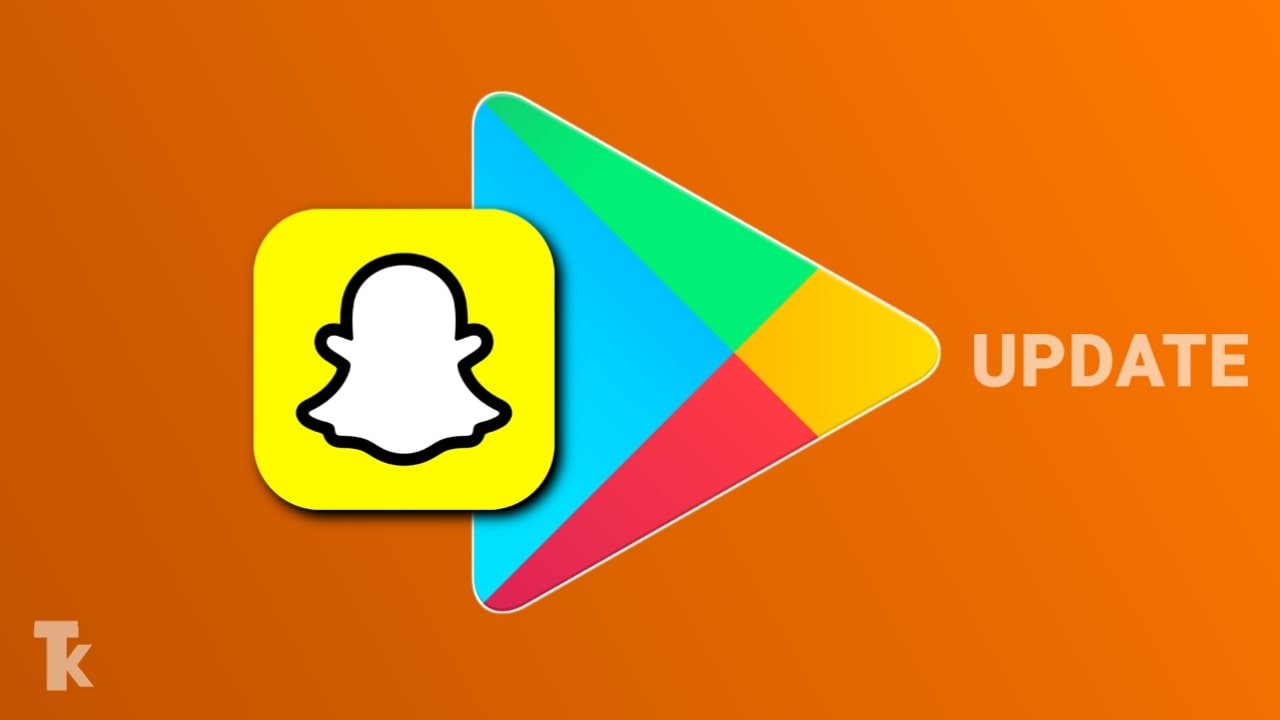The 2025 Micro-Influencer Strategy at a Glance:
- Reach: Micro-influencers (10K–100K) drive 60% higher engagement than macro tiers.
- Trends: Shift budget to TikTok Shop, Faceless Content, and UGC for authentic ROI.
- Costs: Track Cost Per Engagement (CPE); expect $100–$500 per Instagram post.
- Safety: Strict adherence to FTC Disclosure Guidelines is non-negotiable.
Surprising fact: creators with 10,000–100,000 followers make up about 91% of the influencer landscape, and they often deliver far higher engagement than celebrities.
If you run a small brand, this matters. You can reach tight-knit audiences on social media without an enterprise budget. We’ll show you a practical, friendly plan to use these creators to build awareness, drive traffic, and convert sales.
In this short guide, you’ll learn how influencer marketing works across tiers, why influencers in niche communities win trust, and which content formats get the best response. We focus on clear steps you can use today—discover, contact, collaborate, and measure—so your brand sees real returns.
Key Takeaways
- Micro-influencers offer high engagement at lower cost than macro creators.
- You can target niche audiences on major social platforms with focused content.
- Simple collaboration models—reviews, tutorials, short videos—work well.
- Benchmark rates help you budget and avoid overpaying.
- Measure with unique codes and analytics to refine future campaigns.
Why This How-To Guide on micro-influencers Matters Right Now
This moment favors niche creators who build trust and spark true conversations.
Marketers are shifting budgets to influencer marketing because creators at smaller scales drive higher engagement and more authentic conversations. A recent survey shows about 90% of marketers now prefer partnering with small, community-focused creators.
Micro-influencers account for roughly 91% of the influencer market. Their audiences are tight and responsive, so recommendations act like word-of-mouth. Reports show micro content—especially UGC (User Generated Content)—can deliver a ~20% ROI and up to 60% higher engagement than larger creators.
The practical benefit for your brand is simple: you get better reach for less money, faster learning, and more reliable results. You can test multiple creators, refine messaging, and scale what works without relying on one expensive celebrity placement.
- Start small. Track performance and reinvest in top performers.
- Focus on audience fit and platform relevance.
- Use clear measurement to turn influencer activity into repeatable results.
What Are Micro-Influencers and How They Differ by Tier

A creator’s true strength often shows up in community, not just follower numbers. Use tiers to set expectations and pick the right partners for your goals.
Follower count basics: Nano-influencers vs Micro
The distinction between Nano-influencers vs Micro is critical for budget planning:
Nano: 1K–10K — ideal for hyper-local resonance and tight conversations. Often open to Gifted Collaborations.
Micro: 10K–100K — sweet spot for scalable authenticity and strong engagement (about 6% on Instagram in studies).
Macro: 100K–1M — broader reach but often lower two-way interaction.
Mega/Celebrity: 1M+ — mass visibility; engagement can fall near 1.97%.
Beyond the number
Look past follower count. Check relevance, resonance, and proximity: does the creator share lived experience with your audience? Do their posts spark real conversation?
“Influence is a function of trust, not just size.”
Niche examples that drive results
- Partner with cake-decorating creators for baking tools.
- Work with skincare specialists for product launches.
- Match format to niche: tutorials on YouTube, quick tips on Reels.
The Upside of Working with Micro-Influencers—and the Trade-Offs

Smaller creators can deliver sharper results when you want real conversations, not just big numbers. They build trust, spark comments, and turn posts into actions. That makes them a practical tool in modern influencer marketing.
Higher engagement rates and more authentic connections
On Instagram, micro creators often hit about 6% engagement versus ~1.97% for mega accounts. That higher engagement means more saves, shares, and product clicks per post. You can check this manually or use a simple Engagement Rate Calculator formula (Total Interactions / Follower Count × 100) to vet their potential.
Cost-effective reach compared to macro and mega partners
Benchmarks help you budget. Typical rates run from $25–$125 on TikTok to $100–$500 on Instagram posts and $200–$1,000 for YouTube videos.
Pros and cons to set realistic expectations for campaigns
- You get targeted audiences and authentic content that reduces ad fatigue.
- Your cost per meaningful interaction often falls below macro placements.
- Trade-offs: lower raw reach per post and more time for discovery and coordination.
- A portfolio approach—several creators across platforms—scales reach while keeping trust.
“Focus on quality engagement, not just impressions.”
Plan cadence, measure with codes or UTMs, and capture learnings. That way you convert short-term posts into longer-term brand growth.
Plan Your Influencer Marketing Strategy Before You Pitch

Begin your outreach by mapping a clear goal that guides every message and metric. That single priority should shape who you contact, what you pay, and how you measure success.
Set goals and KPIs
Pick one primary objective: brand awareness, mentions, followers, site traffic, or direct sales. Pair it with two supporting KPIs so you can judge early signals and decide whether to scale.
Choose platforms and formats
- Match platform to audience: Instagram for visuals and Reels; TikTok for short discovery clips (especially if you use TikTok Shop features); YouTube for tutorials and reviews.
- Map content to goals: unboxings and reels for reach, tutorials for consideration, promo codes for conversion. Also consider Faceless Content accounts—these niche narrators often have highly engaged audiences without the “personality” overhead.
- Document your niche: define age ranges, interests, and pain points to guide creator selection.
Set measurement from the start. Plan UTMs, attribution windows, and dashboards. Create clear briefs with must-say points and timelines.
We recommend testing multiple creators and content types — working micro- influencers can help you find what converts before you commit larger budgets.
Find and Vet the Right Partners for Your Brand

Start your search with clear priorities: audience fit, voice, and real engagement. That focus makes discovery faster and vetting simpler.
Manual discovery across channels
Search niche keywords in Instagram, TikTok, YouTube, Facebook, and X. Review the Accounts or Search tabs. Shortlist creators whose recent posts match your brand voice.
Begin with your own followers
Audit followers and brand advocates first. Warm relationships convert faster. Fans often welcome product seeding or small paid tests.
Tools to speed discovery
- Brand24 for cross-media mentions, influencer scoring, and sentiment checks.
- Awario as a cost-conscious monitoring option.
- Upfluence when you need end-to-end discovery, outreach, and affiliate tracking.
Vetting checklist
- Engagement rate vs. tier and comment quality.
- Audience demographics, location, and niche fit.
- Influencer Media Kit: Always request this to see their verified analytics and past campaign results.
- Past sponsored posts and how followers reacted.
- Brand safety: disclosures, controversial topics, and copyright risks.
- Practicals: turnaround time, usage rights, whitelisting, and average rates.
“Start small, test quickly, and track everything in a simple CRM or spreadsheet.”
Collaboration Models, Content Types, and Offers That Convert

The right content type makes the difference between a scroll and a sale. Pick formats that match your goal and audience before you brief creators.
Content formats that work
Unboxings and first looks drive immediate buzz and curiosity.
Tutorials teach use and reduce hesitation for purchase decisions.
Reviews build consideration, while carousels and short Reels or micro-videos boost saves and shares. UGC (User Generated Content) style ads—authentic, low-fi videos—often outperform polished studio content.
Offers and conversion mechanics
Use affiliate promo codes and trackable links to credit creators and measure sales. Run timed giveaways to grow subscribers and test product-market fit.
For nano-influencers, Gifted Collaborations (product in exchange for content) can be an effective way to start the relationship without a heavy cash outlay.
Turn reliable performers into ambassadors for seasonal drops and long-term campaigns.
Keep messaging clear and compliant
Give creators a compact brand story kit: mission, key talking points, must-say claims, and do/don’t notes. Offer creative freedom inside those guardrails.
Require FTC Disclosure Guidelines (like #ad or Paid Partnership) are met. These disclosures must be clear and conspicuous.
“Equip creators with clear CTAs and tracking so you can scale what converts.”
For a practical list of brands that work well with smaller creators, see brands that work with micro-influencers.
Budgets, Rates, and Negotiation for Micro-Influencer Partnerships

Start your budgeting with clear platform benchmarks so you know what each post should cost.
Benchmarks by platform
Use these ranges to model scenarios:
- Instagram: $100–$500 per post.
- YouTube: $200–$1,000 per video.
- TikTok: $25–$125 per short video.
- Twitter/X: $20–$100 per tweet.
- Facebook: $250–$1,250 per post.
Compensation models that work
Decide based on your goal: awareness, traffic, or sales.
- Flat fees for guaranteed placement and clear deliverables.
- Product seeding to test fit with limited cash outlay.
- Affiliate or performance pay when you want direct sales tracking.
- Hybrid deals combining a small fee + commission for long-term incentive.
Negotiation tips
Standardize scope to avoid surprises. List deliverables, posting windows, approvals, and CTAs in the brief.
Negotiate usage rights and licensing early if you plan to repurpose creator content in ads. Specifically, ask for Whitelisting Ads rights, which allow you to run paid ads directly from their handle—often boosting conversion rates significantly.
- Allocate budget slices: tests, top performers, and a reserve for opportunistic partnerships.
- Align payment terms, invoices, and affiliate payout cadence up front.
- Balance rate cards against engagement and past performance—not just following or reach.
“Build a simple budget and document learnings after each deal to refine future rates and guardrails.”
We recommend tracking Cost Per Engagement (CPE) across creators so you can compare true value. Use tools like Upfluence for affiliate payouts and Brand24 or Awario for sentiment and discovery when vetting partners.
Launch, Measure, and Optimize for Results

A tight analytics plan turns creative posts into predictable results.
Launch with a clear measurement framework. Define how you will capture impressions, reach, brand mentions, and sentiment so you can judge awareness lift quickly.
Track awareness: impressions, reach, brand mentions, sentiment
Use listening tools like Brand24 or Awario to catch tagged and untagged mentions. Monitor sentiment shifts and volume during the first 24–72 hours to spot momentum.
Tie content to sales: UTMs, unique codes, platform analytics
Instrument every link with UTMs and give each creator a unique promo code. Check platform analytics and affiliate reports to attribute traffic and sales accurately.
Iterate and scale: test creators, content types, cadence, and spend
Compare performance across creators and formats—Instagram carousels and Reels, TikTok micro-videos, YouTube tutorials. Keep tests small, learn fast, and scale top performers with extra posts or paid whitelisting.
- Monitor early signals: saves, comments, view-throughs, and click-outs.
- Feedback loop: share insights with creators so they refine hooks and CTAs.
- Track both: leading indicators (engagement) and lagging indicators (add-to-cart, revenue).
| Metric | Tool | How to attribute | Action |
|---|---|---|---|
| Impressions / Reach | Platform Analytics | UTM by post | Measure awareness lift |
| Mentions / Sentiment | Brand24 / Awario | Query monitoring | Adjust messaging |
| Sales / Conversions | Affiliate / GA | Promo codes + UTMs | Scale top creators |
Conclusion
Wrap your influencer efforts around a clear goal and you’ll turn small tests into steady growth.
Micro-influencers give you cost-efficient access to the right audience. They often beat bigger names on engagement and authenticity.
Start with a tight strategy, pick the best platforms and content formats, and vet partners for fit. Use tools like Brand24, Awario, or Upfluence to find and monitor creators.
Measure everything: UTMs, promo codes, and platform analytics help you link posts to sales and awareness. Iterate quickly and scale the winners into longer partnerships.
Do this, and influencer marketing becomes a repeatable channel that drives real results for your brands and businesses.
FAQ
What is the difference between nano, micro, macro, and celebrity tiers?
The tiers are based on follower count and audience reach. Nano creators typically have under 10K followers and strong community proximity. Micro creators range roughly 10K–100K and offer higher engagement for niche audiences. Macro influencers have hundreds of thousands to a few million followers and give wider reach. Celebrities or mega-influencers move into multi-million followings and mass awareness. Choose the tier that matches your campaign goals—sales, brand awareness, or engagement—while balancing budget and content style.
Why work with smaller creators instead of celebrities?
Smaller creators often deliver higher engagement rates and more authentic content. They know their niche and speak directly to loyal followers, which helps with conversions and brand trust. Costs are lower than celebrity partnerships, so you can run multiple tests and scale what works. For many small businesses, this model boosts brand awareness and sales more efficiently than a single big-name post.
How do I set realistic goals and KPIs for an influencer campaign?
Start by defining primary goals: brand awareness, website traffic, followers, or direct sales. Then pick measurable KPIs: impressions, reach, engagement rate, referral traffic via UTMs, and unique promo-code redemptions. Keep timelines short for tests (2–6 weeks) and set target benchmarks for each KPI so you can iterate fast.
Which platforms should I prioritize for my product or niche?
Match platform to format and audience. Instagram and TikTok excel for short-form visual content and discovery. YouTube is best for long-form tutorials and reviews. Facebook and X help with community posts and news-style outreach. Consider where your buyers spend time and which formats—Reels, micro-videos, carousels, or long tutorials—show your product best.
How do I find the right creators without wasting time?
Start with your existing followers and brand advocates; they already love your product. Use manual searches on Instagram, TikTok, YouTube, Facebook, and X with niche hashtags and keyword queries. Add tools like Upfluence, Brand24, or Awario to scale discovery and monitor sentiment. Apply a vetting checklist: engagement rate, audience demographics, past brand fit, and authenticity of comments.
What should be on my vetting checklist?
Check engagement rate, audience location and age, comment quality (real vs. spam), content relevance, posting cadence, and prior brand partnerships. Look for sentiment and community replies to ensure alignment. Confirm usage rights, FTC disclosure history, and any potential brand-safety issues before you sign contracts.
What collaboration models convert best for small businesses?
Combine models. Product seeding introduces your product affordably. Affiliate promo codes and unique links tie content to sales. Flat fees or hybrid deals (fee plus performance bonus) work for predictable deliverables. Ambassador partnerships build long-term brand affinity. Test different models and scale the ones that show the best ROI.
How do I set fair rates and manage budgets?
Benchmarks vary by platform, content type, and audience size. Consider a per-post or per-campaign flat fee, product exchanges, or affiliate commissions. Always define scope—deliverables, revisions, usage rights, and timelines—to avoid scope creep. Small businesses can run multiple micro or nano collaborations for the same cost as a single macro post.
What legal and compliance steps should I include?
Include FTC disclosure requirements in your briefs: creators must clearly mark ads or sponsored posts. Draft usage and licensing rights for repurposing content. Add cancellation terms and content approval windows in contracts. Keep records of agreements and performance for audits and future planning.
How do I track performance and tie content to sales?
Use UTMs, unique promo codes, and platform analytics to monitor clicks, conversions, and referral revenue. Track impressions, reach, mentions, and sentiment to measure awareness. Combine on-platform insights with Google Analytics or your ecommerce dashboard to get a full view of results. Iterate on creators and creative based on what delivers the best CPA and engagement.
What content types typically drive the most engagement?
Short, authentic formats often win: Reels, micro-videos, and carousel posts for Instagram; TikTok trends and tutorials; and YouTube reviews for deeper storytelling. Unboxings, how-to tutorials, product demonstrations, and honest reviews build trust and drive action. Align content type with platform norms and the creator’s strengths.
How do I negotiate scope, timelines, and rights effectively?
Be clear from the start: list deliverables, deadlines, number of posts/stories, and required tags or CTAs. Negotiate usage rights—how long and where you can repurpose content—and any whitelisting for paid ads. Offer a fair rate with performance incentives to motivate creators. Put everything in a written agreement to avoid misunderstandings.
How can I scale successful campaigns without losing authenticity?
Double down on creators who produce high-performing, authentic content. Increase budget gradually and keep creative briefs flexible so creators can maintain their voice. Test different content types and formats while keeping the core messaging consistent. Use ambassador programs for longer-term relationships that retain trust.
What are quick tips for small businesses starting out?
Start small with product seeding and a few short-term tests. Set measurable KPIs, use UTMs and promo codes, and track results. Prioritize creators with niche relevance and genuine engagement over large follower counts. Reinvest in the best-performing partnerships and build an evergreen content library for ads and organic use.


